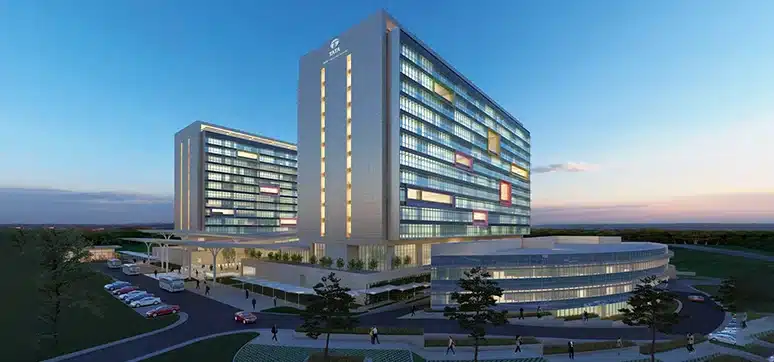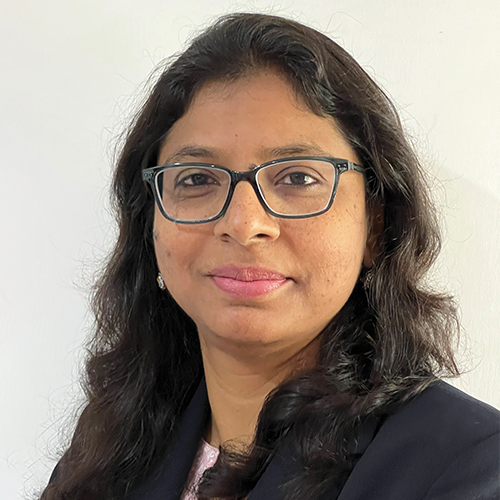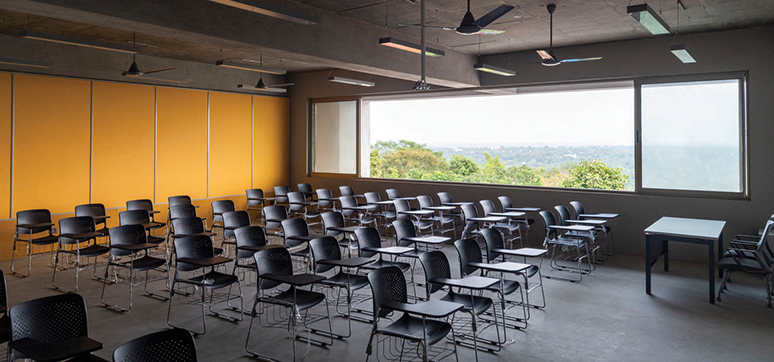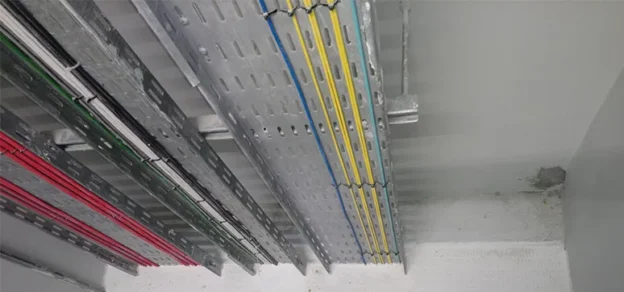In an interview with SWATI PUCHALAPALLI Founding Partner & Director, Terra Viridis, she explains her approach to design, principles of sustainability, carbon neutrality, and conservation of energy. She also spoke about services offered by Terra Viridis, some of her milestone Net Zero projects, and much more. Here is the excerpt from the interview.
Tell us about your educational background and career experiences. How did you enter this profession?
I studied architecture and moved into sustainability immediately after. I did my masters in sustainable design from Edinburgh, UK. On the completion of my M.Sc., I worked in London for about six years in a consultancy firm called BDSP Partnership, which specialised in the sustainable design of buildings. I moved to India to work on a project that was very close to my heart, and which I felt very passionate about.
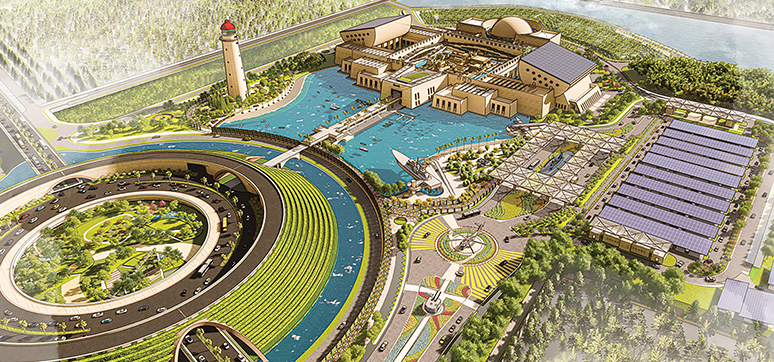
It was all about creating a larger impact by integrating a set of policies that will have a larger impact on our building industry. In 2008, we started working with the Hyderabad Metropolitan Development Authority and The Energy and Resources Institute (TERI) to develop the Environmental Building Initiative for the city of Hyderabad. This was the first of its kind in India.
We not only developed a whole set of guidelines for sustainable building design for different types of buildings, commercial, residential, retrofits, etc. but also organised several stakeholder meetings and created a roadmap for implementation. We also devised a set of incentives and potential regulations for increasing buy-in. During this time, I got introduced to Infosys and the Manipal group and started working more in the consultancy sector. Since then, I have been working on several projects across the board as a sustainability consultant with a primary focus on high-performance buildings, specifically working with architects through data-driven analysis to help them make design decisions from very early to detailed design stages.
What inspired you to pursue a career in sustainability after doing architecture?
I’ve always been interested in the environment and conservation right from the time I was a child. Architecture happened by chance. Sustainability is something that I have always been interested in. If I hadn’t done architecture, I would have pursued sustainability and environmental conservation in another form.
What were the turning points in your career?
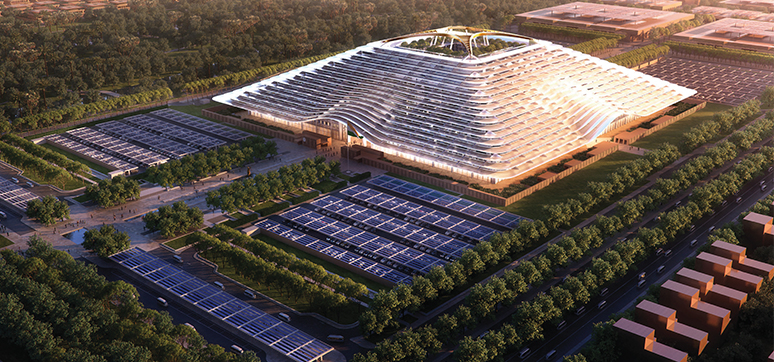
I would say, my first turning point happened when I started working for a consultancy in London called BDSP, which specialised in high-performance building design, where they looked at buildings from a design perspective. Integrating passive design into buildings is the first step towards sustainable or Net Zero design. This was a very important part of our philosophy at BDSP. It was a huge learning experience that laid a solid foundation for my thoughts and ideals.
The second turning point happened when we started working with TERI, Ms Mili Majumdar, and Hyderabad Metropolitan Development Authorities on environmental building guidelines and regulations. The third turning point was the introduction to Infosys and Mr Rohan Parikh. Infosys then introduced me to Manipal, Group – Mr. Abhay Jain and Mr. Mohandas Pai. These are some of the key people who encouraged me and asked me to push the boundaries of sustainable design. Everything in my profession has grown organically from those turning points, with the steadfast support from my husband and family.
Could you please throw some light on the Net-Zero projects done by your firm Terra Viridis?
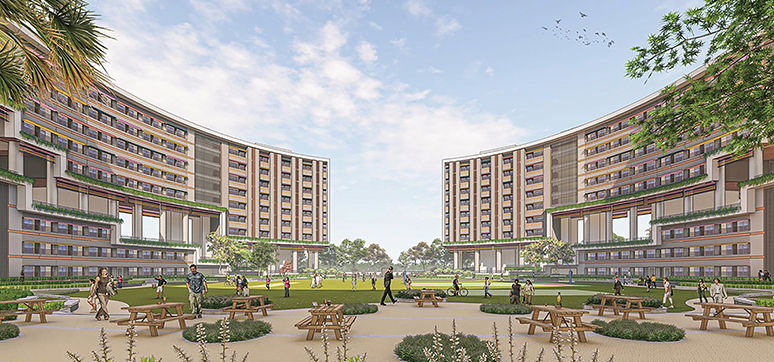
For a long time, India’s focus has been on rating systems regarding sustainable design, which was a good starting point because that gave a comprehensive approach to sustainability. However, the effectiveness of applying a rating system completely depends upon how closely the intent of the rating system is followed. Over the past five years, there has been a movement accelerated by Covid, where large corporates and developers have started looking at sustainability from an operational performance perspective, focusing on resource efficiency, comfort, wellness and health, with requirements beyond rating systems. As a practice, we have come a long way in the last 15 years. By focusing on assisting the design team in achieving high-performance and high-comfort buildings through passive design integration, we now have enough case studies to showcase our philosophy that good architectural design is a precursor to high performance and that it does not cost more.
Over the past 4 to 5 years, we have moved on to working on more net zero projects with a focus on net zero energy, net zero water and net zero carbon. One of our first Net Zero Buildings at Manipal University Jaipur is one of the world’s largest that has shown Net Zero energy in operation with 100% onsite renewable energy. Now, while we continue to focus on net zero and high comfort, wherever possible, we are looking at restorative and regenerative designs. For restorative design, we consider restoring the site’s biodiversity and making it intrinsic to the sustainable development of the built environment.
In this process, we also focus on net zero water and waste, especially in the Indian context, where we must look beyond “Reduce, Reuse, Recycle”. We work on introducing design features and spaces that help influence people to avoid waste generation, give opportunities to repair and upcycle, and help convert waste to wealth. So, this is what we have been working towards with a lot of clients, especially in universities and large campuses.
In major cities of India, there are many historical buildings. Is it possible to restore and reuse them?
It’s always better to restore and adapt a building to present-day requirements than to demolish and build from a sustainability perspective. They are also great case studies to help us understand the bioclimatic design principles of any specific location. While it requires a lot more effort and time to do so in a culturally, functionally and appropriate way, many architects are doing a wonderful job of restoring and repurposing historic buildings.
Please tell us about your organisation Terra Viridis, its growth, and its strength. What is the what does the Terra Viridis – the name of the firm mean?
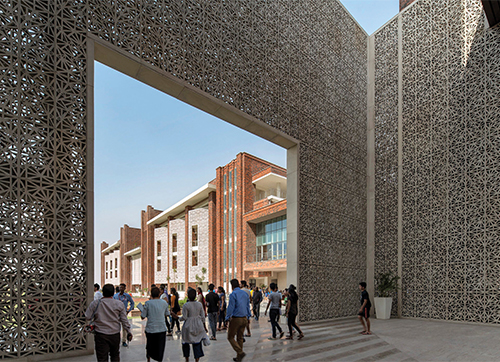
Terra Viridis translates to “Green Earth” in Latin. My husband, Aditya and I started tirm in 2007 and since then, we have grown very organically, primarily through word-of-mouth references. We have been very lucky to have started our work with clients who kept pushing boundaries to achieve the best performance possible. Presently we have offices in Hyderabad and Bangalore.
We also have a sister company called Vera Tatva Engineering Consultants with our MEP partners who focus on high-performance MEP design, commissioning and auditing.Between us, we provide integrated sustainability and MEP services from the early design stage to commissioning and post-occupancy auditing. With this, we can take our learnings from post-occupancy auditing for comfort, usable daylight, glare-related issues, thermal comfort, HVAC-, electrical, occupant behavior, etc back into design.
According to you, considering a design, what is actual sustainability for you?
Every built environment has an environmental footprint. Hence, actual sustainability is when we look at development holistically and try to reach a state of regenerative development. To achieve this, the first port of call should be to understand the carrying capacity of a site based on the function of a proposed development. If all decisions start there, starting with the quantity of built-up area, leading to resource management within what is available on site, it would be the ideal development from a sustainability perspective.
However, this is highly unlikely in India’s present development context. So, the next best thing would be to optimise the available resources (energy, water, materials) to the maximum extent possible given the function and density of the development (not limiting to what a code or a rating system might require), future proof design for climate resilience & flexibility and minimize its impact on external services (waste and stormwater). In doing so, keeping it simple based on the user’s ability to manage would be critical as well.
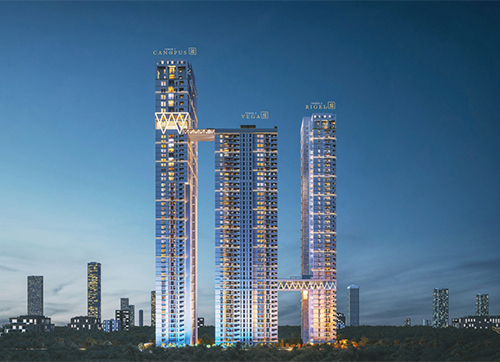
It’s a myth that sustainable design or high-efficiency design is expensive. We have done detailed cost-benefit analysis on many of our projects, and the data proves that capex does not increase if the design team works together. Integrating principles of passive design in architecture to reduce demand, followed by optimising/right-sizing of the M&E systems, and integrating high-efficiency systems + controls usually has a minimal impact on CAPEX but has the ability to save on OPEX immensely.
As a sustainability consultant, where does your intervention in a project start? Towards the last stages of the project or from the design stage itself?
Earlier, sustainability consultants were involved towards the end of the project. But now, the market has matured, and we work with clients and architects who appreciate that our role starts from the very early stages of design. So we work on projects with the whole design team, integrating various aspects like conservation of resources, resilience, energy efficiency, etc., from a very early design stage onwards.
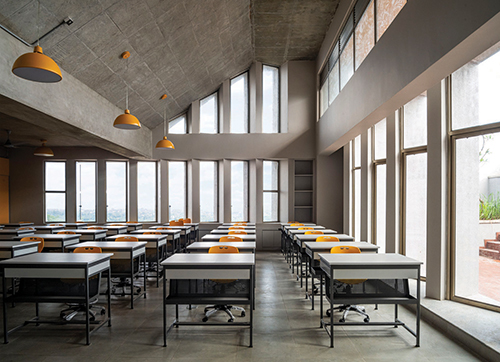 How do you think the façade will help in making the building sustainable as well as long-lasting?
How do you think the façade will help in making the building sustainable as well as long-lasting?
After we close the initial massing, orientation, form and layout of the building, the facade is the biggest element that greatly impacts energy efficiency and comfort in any building. In tight sites, the façade ends up being the only part of a building through which energy efficiency and comfort can be maximised through architectural design. Also getting the facade right defines how comfortable the building is – both thermally and visually. We have recently worked on developing ISHRAE’s building envelope guidelines to Organo Rurban Habitat – FHD Architects define the various energy and comfort parameters a building envelope has and their effects on the building’s performance.
What is your view on using glass on building facades, considering Indian climatic and weather conditions?
Glass is not bad, it is very useful and probably one of the greatest inventions of mankind. However, it has to be used judiciously, in the right location and quantity, with the right amount of external shading, control on glare, heat, sound, etc.
Can you please tell us about some of the innovative technologies which you recommended for making buildings more sustainable?
I would always focus on design first and technology later. In our experience, integrating the right passive design techniques with a focus on comfort could have as much as 50% impact on the energy efficiency of a building. So, I would start with form, orientation, and microclimate first, then interior layouts, and then the facades. Once you get these right – technology can help enhance efficiency and comfort to achieve the best possible outcome.
Different types of innovative shading devices, be it static or dynamic, are very important technologies for our climatic conditions, followed by spectrally selective glazing. The various types of static and dynamic shading devices available now could give the architect many opportunities to create some very interesting facades.
In almost all climatic conditions in India, there is a certain time of the year when you do not need active cooling or heating. Taking advantage of this in our buildings would have a major impact on achieving India’s net zero energy goals. The control technology that helps in seamlessly moving building operations from natural ventilation to an active cooling mode and vice versa is an area with lots of innovative solutions.
New technologies in the space of personal comfort systems and AI-based energy and water monitoring devices that provide information and control to users have huge opportunities for growth.
There have been some very promising developments in low-energy active cooling technology space for residential and small building applications through the Global Cooling Prize that are worth looking for in the near future.
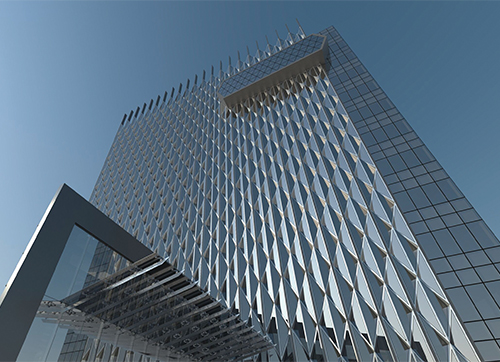
Could you please tell us about one or two projects where you have incorporated design and methodologies to improve the building?
We have been helping architects design facades that provide glare-free spaces with zero blinds for several offices (specifically Infosys) and university buildings, including Manipal University campuses and Ashoka University. We are working with Ar. Ashok Lall on the Net Zero TSREDCO building in Hyderabad where we are integrating innovative dynamic shading devices that are mechanically controlled seasonally.
Another aspect of design we focus on is minimising energy waste due to human behaviour. In academic institutions, especially hostels, opening windows while the air-conditioning is on is common.
To overcome this, providing limit switches not only helps reduce waste but also encourages users to be aware.
Tell us about some of the most challenging projects which you have worked on.
We are fortunate to work with clients and architects who give us challenging projects and demand that their projects set new benchmarks in sustainable design. Thus, every project is about pushing the envelope regarding sustainability and keeping it within budget. Probably one of the most challenging projects that we are working on right now is the National Maritime Heritage Centre, designed by Architect Hafeez Contractor. It is located in a very challenging climatic condition, on a very challenging site, and the timelines of the project are tight. We are honoured to say that PM Shri Narendra Modi has taken a personal interest in its evolution. Conceived as a Net Zero Energy and Water development, with the ability to adapt to a 100-year climate resilience risk, the design team is working tirelessly to achieve these goals.
Post Covid, did you see any changes in the design pattern?
Yes, people have been looking at sustainability in a completely new light. They are a lot more receptive to the idea of integrating natural ventilation and mixed-mode strategies. Previously it was very common to have sealed windows, install a VRV or a split air conditioning, and not consider the requirement for fresh air in buildings. Now, it is much easier to convince clients to give equal importance to fresh air, and operable windows for natural ventilation/mixed-mode operations.
So, the conversation regarding indoor air quality has been pushed to the foreground.
What is your advice to young designers and young sustainability consultants?
This is what I tell all my students and anyone who works with me. As an architect, many analysis software and tools are available when you get into sustainable design. My first advice is not to jump into the simulation tools. Understand the theory and the basics of passive design first and then use the tools to test your options.
If you use tools without background theory and knowledge, you will lose your ability to find and analyse mistakes.
My second piece of advice is to ask yourself the question -Do you want to be an architect? Or do you want to be an analyst? Choose your path judiciously after understanding where your interests and skillset lie.
Could you please tell us about some of the tools, which you are using for creating sustainable buildings or sustainable developments?
We use different types of tools at different stages of design. At a very early design stage, we use many in-house developed tools. Afterwards, we use the latest parametric design tools for detailed design. We keep up to date with all the latest software and continually explore new ways to analyse building design. Due to the complexity of our models and the need to work in tandem with the architects. We have now moved to cloud computing to run our simulations. Hiring supercomputers to run the simulations helps us get quicker results and allows the design team to experiment with multiple design iterations. Our clients expect us to push the boundaries of sustainable design expediently; thus, we primarily use cloud computing.
What is your vision for 2030 when you look at building sustainability and the entire urban development?
I hope that all the talk we have now, in terms of sustainable development becomes mainstream, with every building designed to achieve its utmost potential concerning sustainability. I hope a holistic approach to sustainable design becomes one of the major drivers in the decision-making process of new buildings or retrofits.
I hope urban planning is based strongly on designing for climate change, both mitigation and adaptation. I hope the density of development allowed is based on the area’s carrying capacity concerning water.
I hope urban development is undertaken with utmost sensitivity to biodiversity conservation and local geology. I strongly believe that one tree saved is several lives saved.
We also have no choice but to do so. So the quicker we fall in line, the greater our chances for survival.
